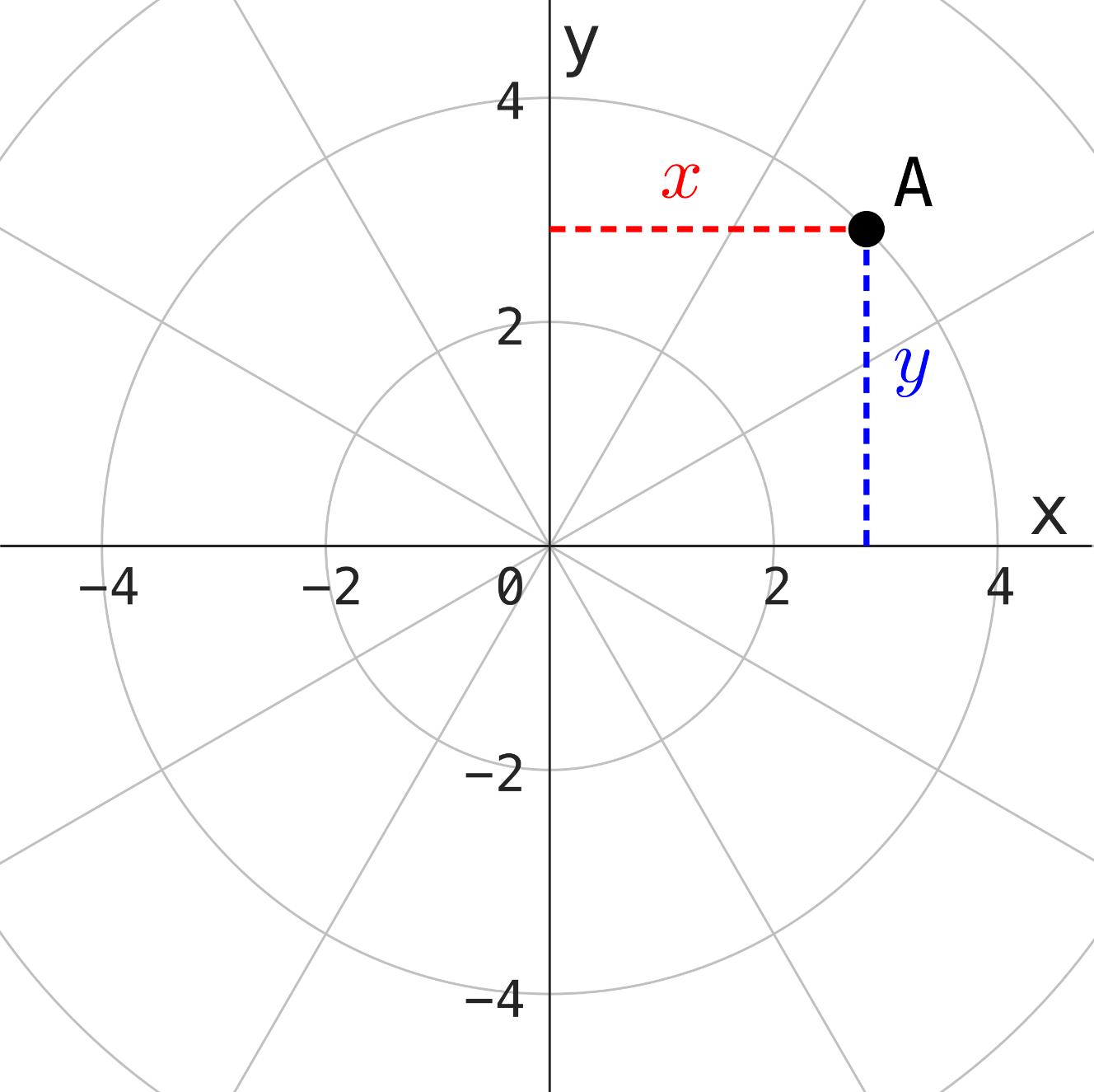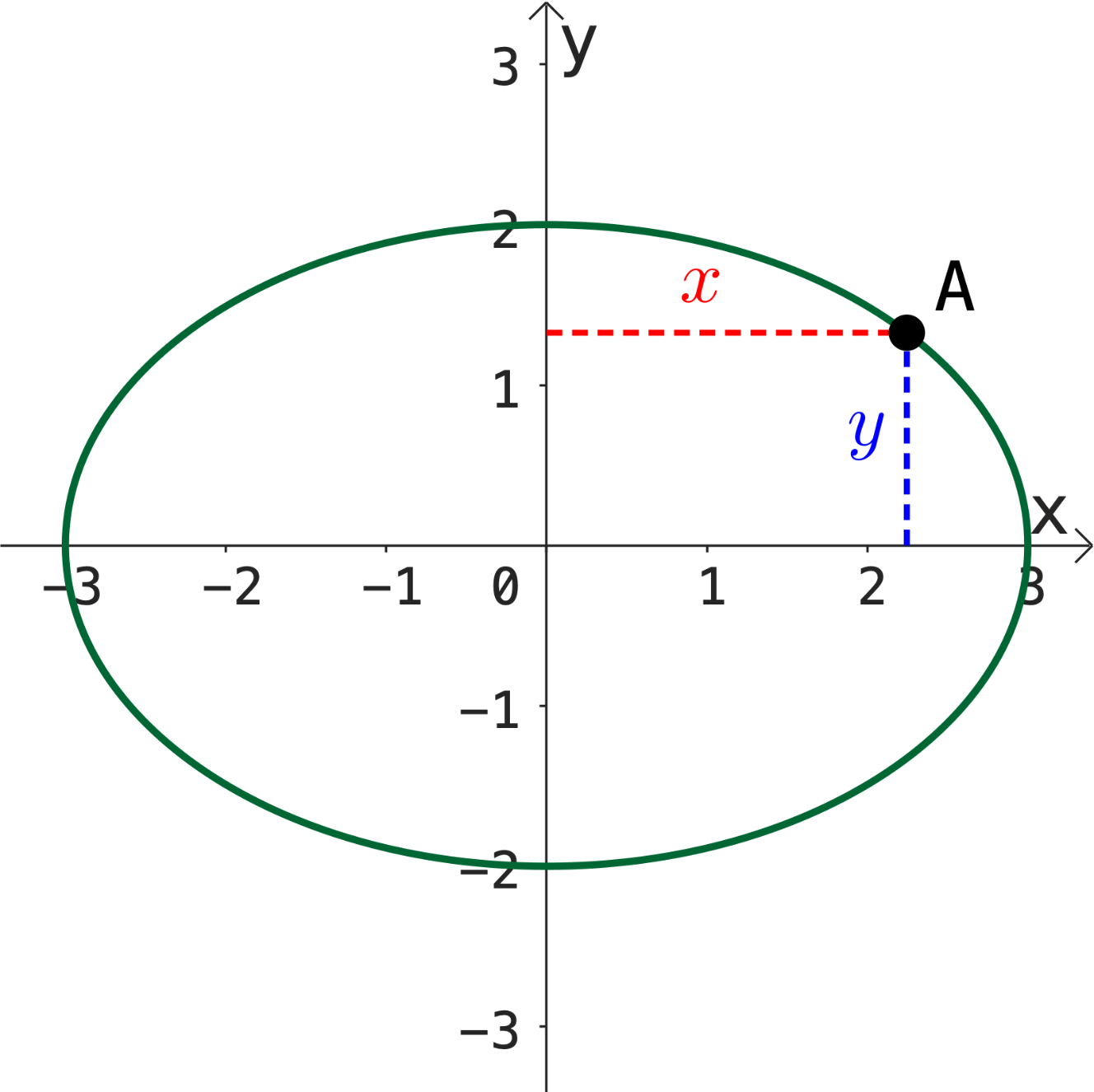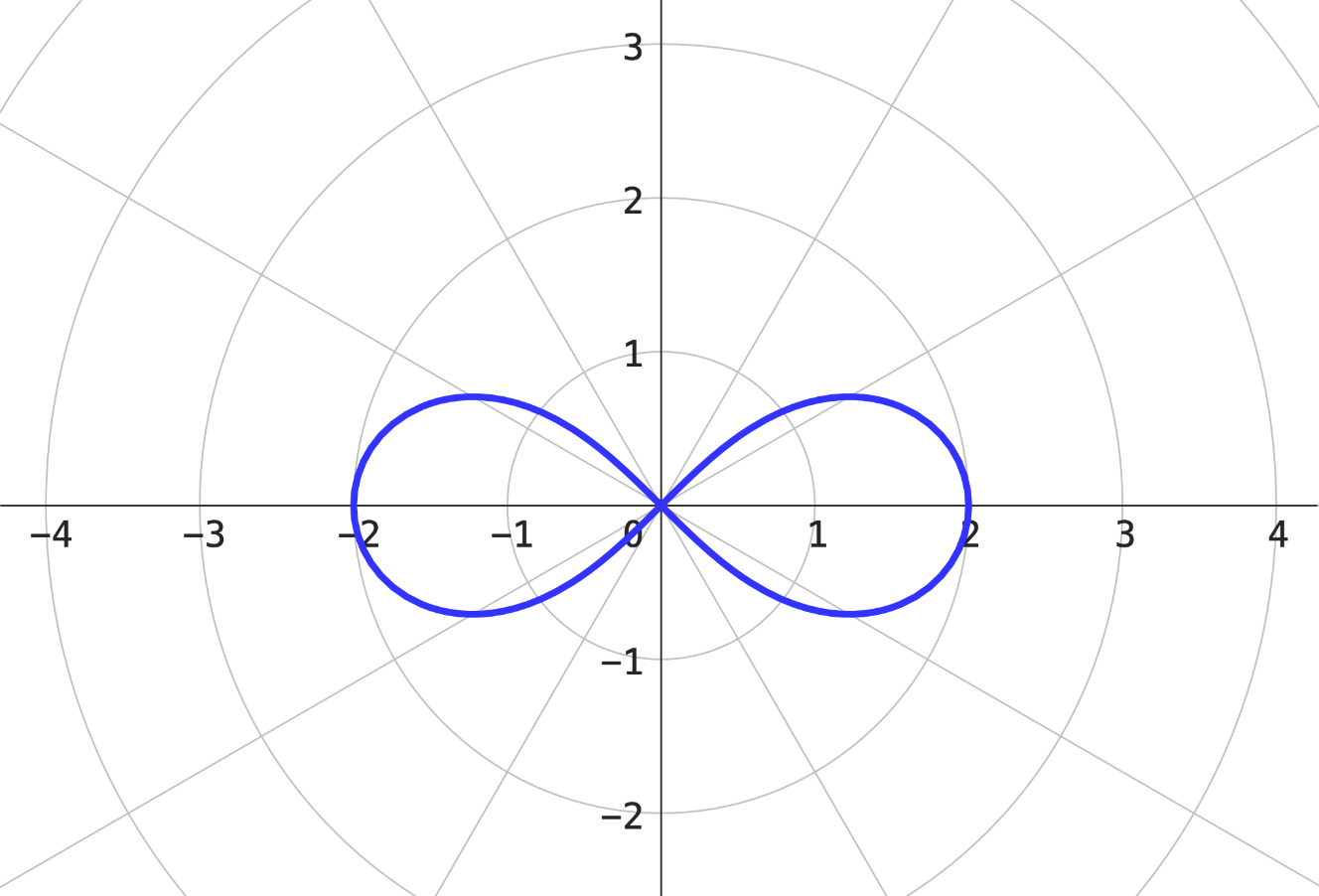Hexagonal
Curves

Cartesian Coordinate System
Polar Coordinate System


Cartesian Coordinate System


* One must consider what quadrant the point is in when computing \(\theta\) from this identity.
Polar Coordinate System
Cartesian Coordinate System

\(x=1\,\) and \(\,y=2\).
\(r^2=(1)^2+(2)^2\)
\(r^2=5\)
\(r=\sqrt{5}.\)
Then
\(r^2=x^2+y^2\)
Since \(\tan\theta = y/x,\)
\(\tan\theta =\dfrac{2}{1}\)
\(\Rightarrow\theta =\arctan(2).\)
From cartesian to polar

From cartesian to polar
Therefore
\((1,2) = \left(\sqrt{5};\arctan(2)\right)\)

\(r=4\,\) and \(\,\theta=\dfrac{\pi}{4}\).
\(x = r\cos\left(\theta\right)\)
Then
\(x = 4\cos\left(\dfrac{\pi}{4}\right)\)
\(x = 2\sqrt{2},\)
\(y = r\sin\left(\theta\right)\)
and
\(y = 4\sin\left(\dfrac{\pi}{4}\right)\)
\(y = 2\sqrt{2}.\)
From polar to cartesian

From polar to cartesian
Therefore
\(\left(4;\dfrac{\pi}{4}\right) = \bigg(2\sqrt{2},2\sqrt{2}\bigg)\)
Equations in cartesian and polar coordinate systems




Equations in cartesian and polar coordinate systems









n = 50
k = 2.5
m = 3GeoGebra code
n = 50
k = 2.5
m = 3
t = Slider(0, 2*pi, 0.01)GeoGebra code
n = 50
k = 2.5
m = 3
t = Slider(0, 2*pi, 0.01)
c = Curve((1/(cos(m*θ/2)^n + sin(m*θ/2)^n)^(1/(k*n)); θ), t, pi + t)GeoGebra code
n = 50
k = 2.5
m = 3
t = Slider(0, 2*pi, 0.01)
c = Curve((1/(cos(m*θ/2)^n + sin(m*θ/2)^n)^(1/(k*n)); θ), t, pi + t)GeoGebra code
n = 50
k = 2.5
m = 3
t = Slider(0, 2*pi, 0.01)
f(x) = cos(m*x/2)^n + sin(m*x/2)^n)^(1/(k*n))GeoGebra code
n = 50
k = 2.5
m = 3
t = Slider(0, 2*pi, 0.01)
f(x) = cos(m*x/2)^n + sin(m*x/2)^n)^(1/(k*n))
c = Curve((1/f(θ); θ), t, pi + t)GeoGebra code
n = 50
k = 2.5
m = 3
t = Slider(0, 2*pi, 0.01, 0.3, 200)
f(x) = (cos(m*x/2)^n+sin(m*x/2)^n)^(1/(k*n))
Sequence(Curve((j * 1/f(θ); θ), θ, j*t, pi + j*t), j, 1, 10)Final GeoGebra code





Thanks for
watching!
Patreons:
David Arso Civil, bleh, Dennis Watson, Neil, Doug Kuhlmann, mirror, Newnome Beauton, Adam Parrott, Sophia Wood (Fractal Kitty), pmben, Abei, Edward Huff.
Thanks for
watching!
Patreons:
David Arso Civil, bleh, Dennis Watson, Neil, Doug Kuhlmann, mirror, Newnome Beauton, Adam Parrott, Sophia Wood (Fractal Kitty), pmben, Abei, Edward Huff.

Thanks for
watching!
Patreons:
David Arso Civil, bleh, Dennis Watson, Neil, Doug Kuhlmann, mirror, Newnome Beauton, Adam Parrott, Sophia Wood (Fractal Kitty), pmben, Abei, Edward Huff.

Thanks for
watching!
Patreons:
David Arso Civil, bleh, Dennis Watson, Neil, Doug Kuhlmann, mirror, Newnome Beauton, Adam Parrott, Sophia Wood (Fractal Kitty), pmben, Abei, Edward Huff.

Thanks for
watching!
Patreons:
David Arso Civil, bleh, Dennis Watson, Neil, Doug Kuhlmann, mirror, Newnome Beauton, Adam Parrott, Sophia Wood (Fractal Kitty), pmben, Abei, Edward Huff.